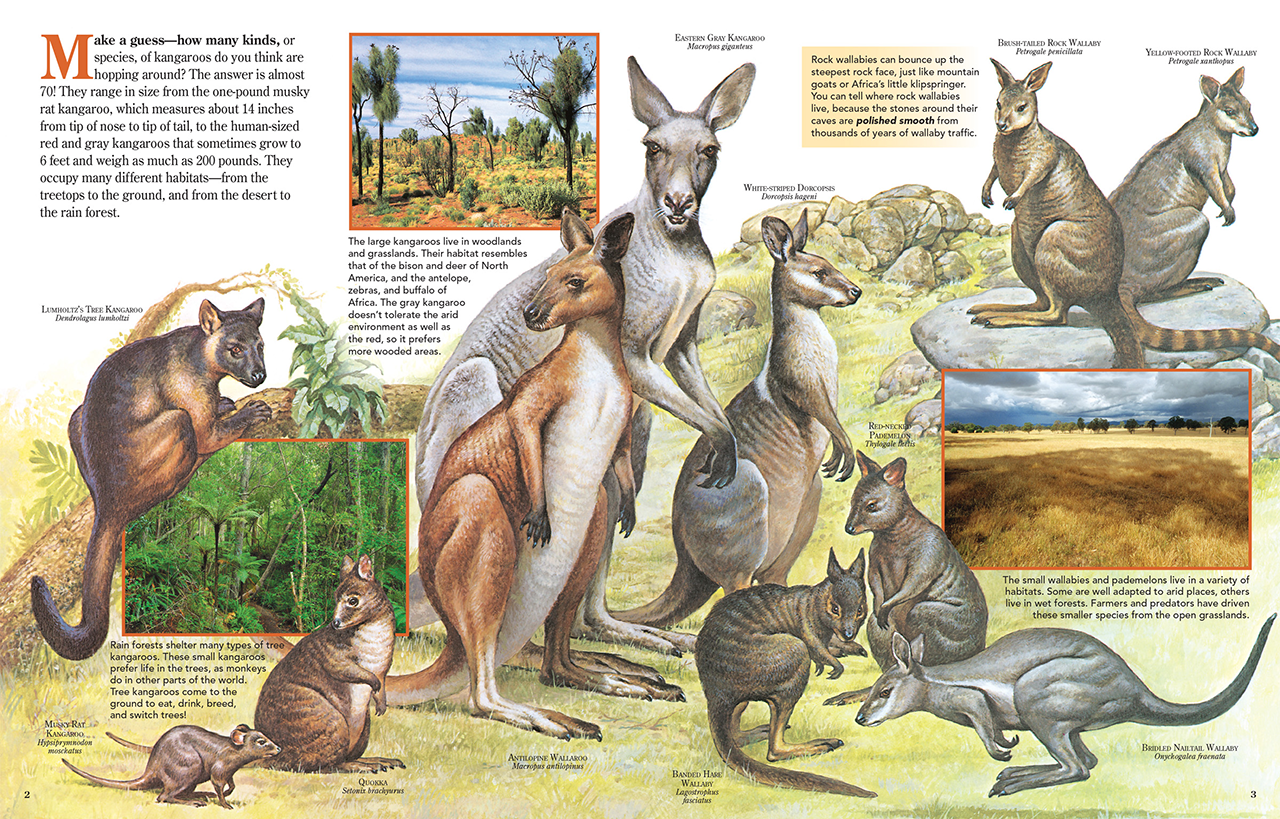
So Many Kangaroos!
ByMake a guess—how many kinds, or species, of kangaroos do you think are hopping around? The answer is almost 70! They range in size from the one-pound musky rat kangaroo, which measures about 14 inches from tip of nose to tip of tail, to the human-sized red and gray kangaroos that sometimes grow to 6 feet and weigh as much as 200 pounds. They occupy many different habitats—from the treetops to the ground, and from the desert to the rain forest.
The large kangaroos live in woodlands and grasslands. Their habitat resembles that of the bison and deer of North America, and the antelope, zebras, and buffalo of Africa. The gray kangaroo doesn’t tolerate the arid environment as well as the red, so it prefers more wooded areas.
Rain forests shelter many types of tree kangaroos. These small kangaroos prefer life in the trees, as monkeys do in other parts of the world. Tree kangaroos come to the ground to eat, drink, breed, and switch trees!
 Rock wallabies can bounce up the steepest rock face, just like mountain goats or Africa’s little klipspringer. You can tell where rock wallabies live, because the stones around their caves are polished smooth from thousands of years of wallaby traffic.
Rock wallabies can bounce up the steepest rock face, just like mountain goats or Africa’s little klipspringer. You can tell where rock wallabies live, because the stones around their caves are polished smooth from thousands of years of wallaby traffic.
The small wallabies and pademelons live in a variety of habitats. Some are well adapted to arid places, others live in wet forests. Farmers and predators have driven these smaller species from the open grasslands.

